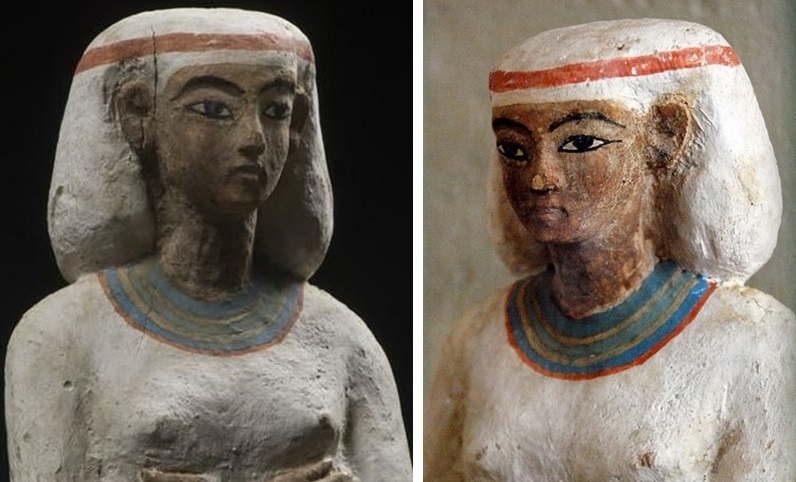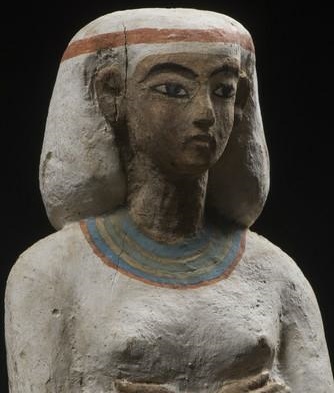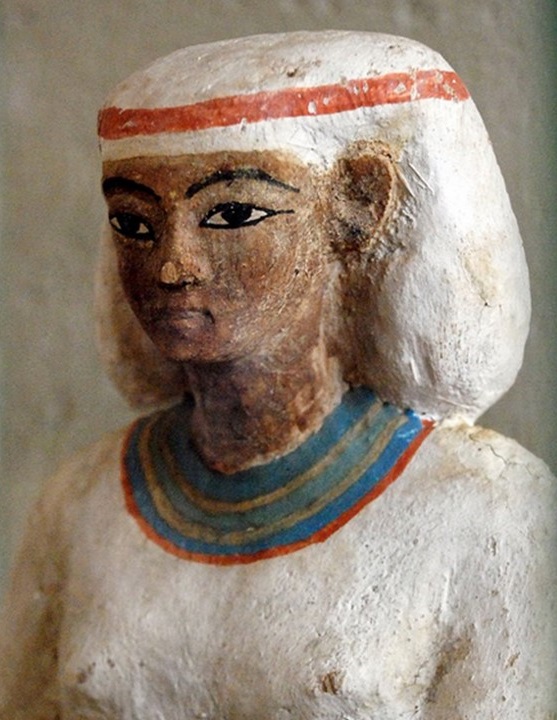In this post I would like to focus on two wooden sculptures of Isis and Nephthys. They are nowadays in two different museums; one is in the Art and History Museum of Brussels and the other one in the Museum of Fine Arts of Budapest.
Although they are noadays separated it sems quite clear that they belonged to the same group. So, they belonged to the same funerary equipment.
Similar but Different.
Their size and their style are very similar: both images of Isis and Nephthys are made of wood an covered with plaster, the two women appear with the same gesture, clothes and headdress, and also they present the same polychromy.
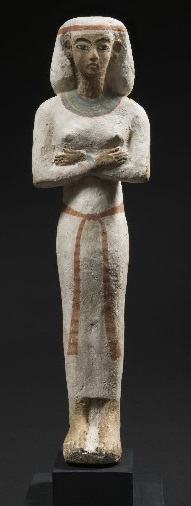
Statue in wood of a professional mourner. Dynasty XIX-XX. Provenance unknown. Art and History Museum of Brussels. Inv. E06885. Photo: Musées Royaux d’Art et d’Histoire. 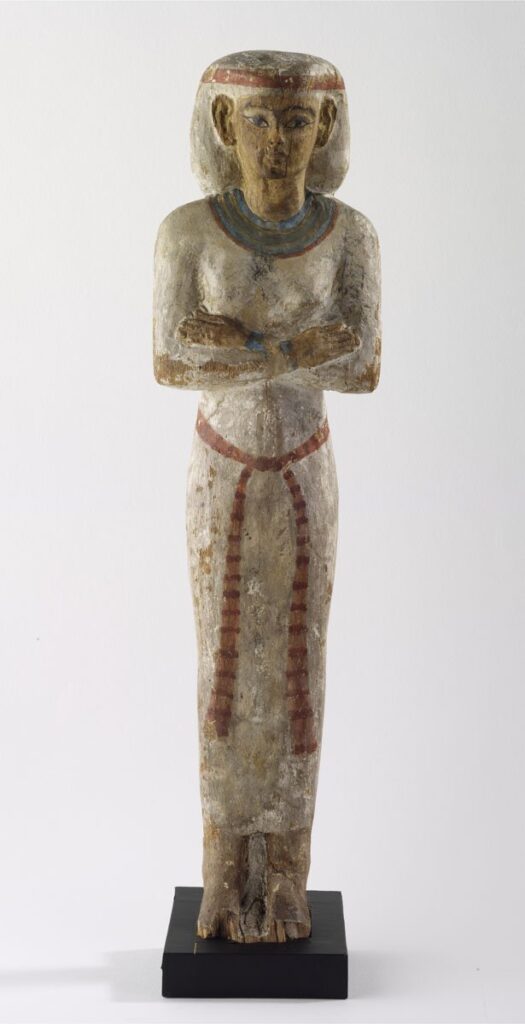
Statue in wood of a professional mourner. Dynasty XIX-XX. Provenance unknown. Museum of Fine Arts of Budapest. Inv. 512255. Photo: www.mfb.hu
However the manufacture of both shows some differences. In both statues the arms are crossed over the chest and just below the breasts; but the arms of the mourner in Budapest are slightly more rounded, And the breasts of the mourner in Brussles seem more turgid.
Face.
But the biggest difference is in their heads. Although the expression of the faces is similar, the shape of the visage differs. The mourner in Brussels shows a norrower face with very thick eyebrows. which gives it a rougher expression.
However there is something in the eyes of both statues which gives a delicate look to these faces of Isis and Nephthys. It is the arched eyebrows and almond-shaped eyes. This similarity could be a proof that the statues were made following similar guidelines.
Dress
In the same way, the headdresses are slightly different, being more rounded in the statue of Budapest. But both have the same polychromy and the same style.
This similarity is more evident in the usej collar on their necks. Both have the same polychromy with the same placement of colors. Likewise, the full body dress in white color and with red belt leaves no doubt that the production of both statues was simultaneous.
Everything suggests that two different artisans were working on both statues of Isis and Nephthys. Probably they worked together in the same workshop and under the instructions of the same master, but it was inevitable that each one captured his own pulse.
Two Statues of Professional Mourners.
Although these images are not identified and are anepigraphic we are quite sure that they depicted Isis and Nephthys.
Both women show two typical features of the two professional mourners in Ancient Egypt.
The Headdress of Isis and Nephthys.
The headdress is a white cloth (usually called afnet) attached with a red headband. We know that some other headdresses can occur for the two professional mourners in the role of Isis and Nephthys.
But there are many depictions showing that this one white with red band was very usual, especially during the New Kingdom. Let’s see some examples:
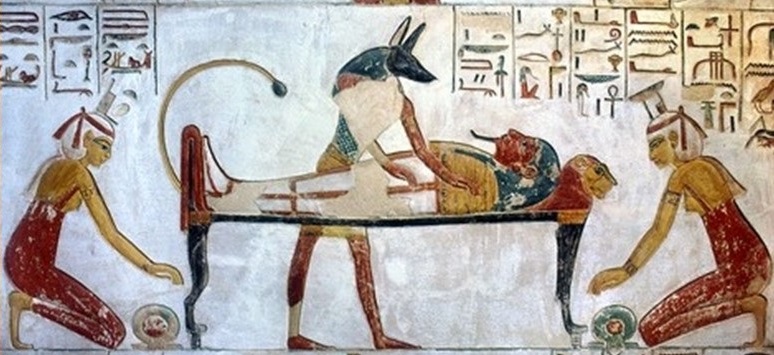
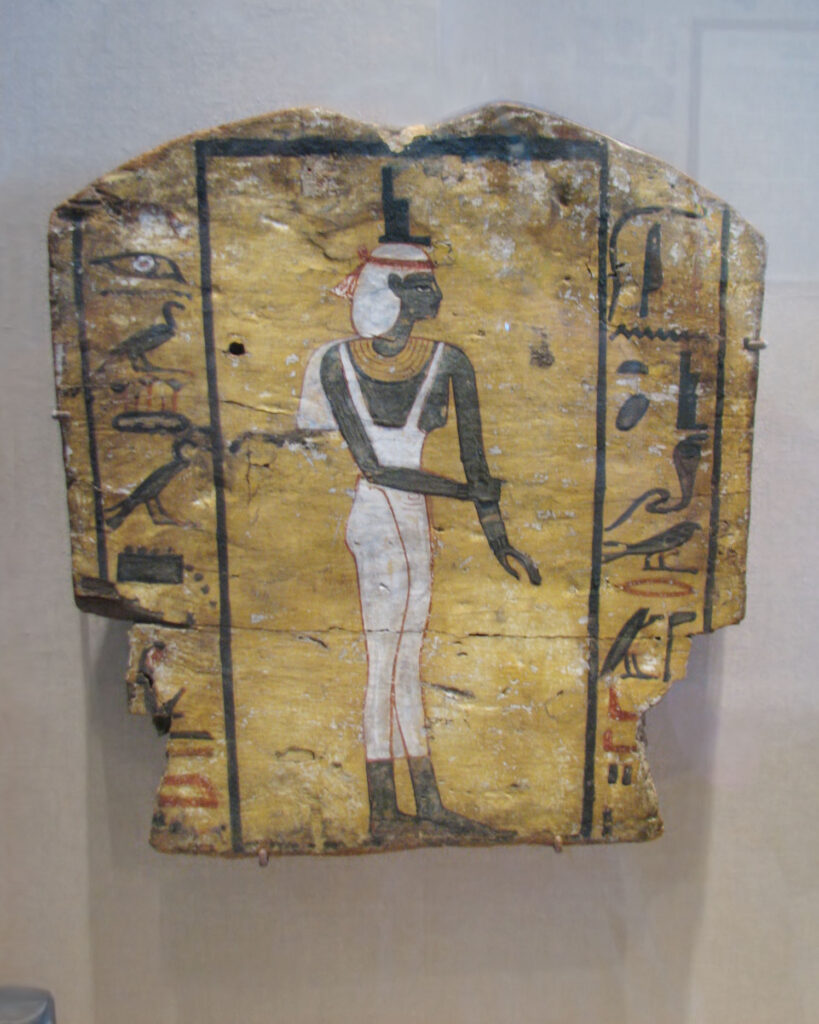

The Controlled Gesture.
Another feature, which reminds the two professional mourners in the role of Isis and Nephthys is their “body language“.
The artists in Ancient Egypt depicted common mourners in the funerary cortege making many different gestures (raising arms, bending bodies, etc.).
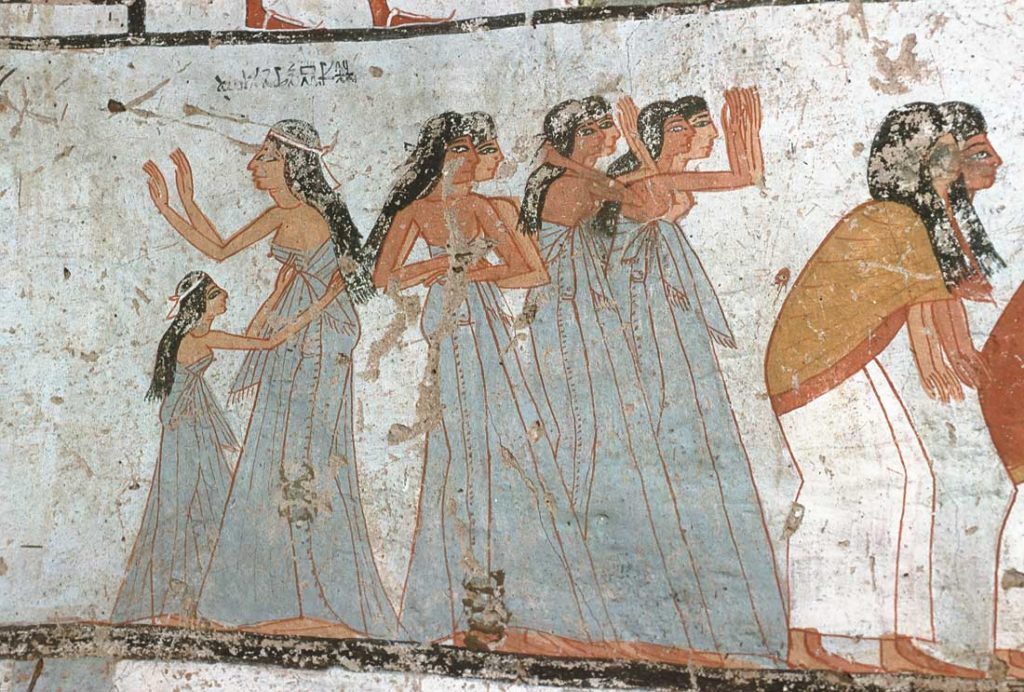
On the conttrary, Isis and Nephthys stand up at both extremes of the corpse reaching their arms towards the dead, or holding an arm, or just crossing their arms on their chests.
We recognize the two representatives of Isis and Nephthys in the funerary ceremony scenes because of their more “controlled” attitude. No movements, no postures of despair, no spontaneity. As the two statues of Budapest and Brussels .
Reflection.
These two staues of Isis and Nephthys were manufactured at the same time, surely in the same workshop, but apparently by two different artisans.
The same tomb owner must have ordered the production of them and for sure that both images were placed together in his grave.
Unfortunately at some point and somehow someone separated and decontextualized both images of Isis and Nephthys.
